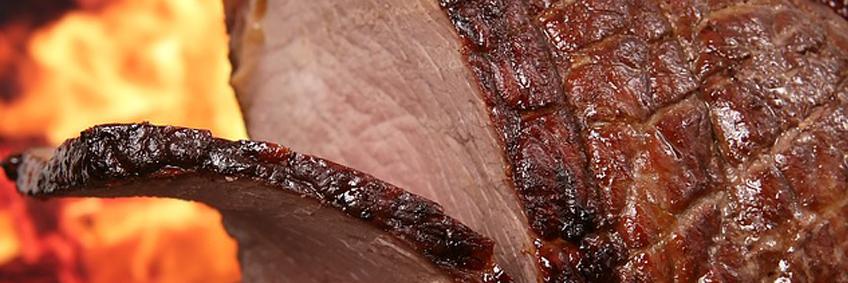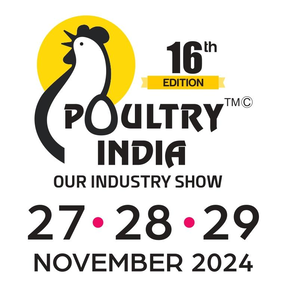4 Challenges Facing the Meat and Poultry Industry…and How to Overcome Them

But with great challenge comes great opportunity!
For this article, we spoke with Extension Meat Specialist and Associate Professor at the University of Wisconsin-Madison Jeff Sindelar. Sindelar has extensive experience with the meat industry, doing research on food safety, ingredient functionality, and more. He works with meat industry stakeholders in Wisconsin and beyond, and he developed the University of Wisconsin’s Master Meat Crafter Training Program. Sindelar was also recently named as one of National Provisioner’s 25 Future Icons of the Meat Industry.
Last semester, Sindelar served as a PROCESS EXPO Expert in Residence, contributing articles on functional ingredients for processed meats, quality and safety considerations for alternative curing, how to design useful validation studies, and the growing market for fermented sausages. Here, he shares four challenges he sees facing the meat and poultry industry today and, most importantly, how processors can overcome them.
Challenge #1: New regulations and higher expectations
Nearly every expert we’ve talked to has highlighted the impact new regulations are having across the food industry.But Sindelar takes it one step further to explore the expectations that those regulations entail.
“Historically, the meat industry has made tremendous strides in both controlling and reducing pathogenic organisms,” Sindelar says. “They’ve already gotten all of the low-hanging fruit. Now, processors need to look at the next level of targets and goals being established by FSIS. This will prove challenging because it requires new approaches and new methods to meet the goals and expectations.”
This next level of targets he’s talking about aren’t just extensions of the current ones. In some cases, they come with a whole new set of processing challenges regarding their feasibility and even regarding the availability of scientific support for how to accomplish them.
As an example, Sindelar cites the agency’s new compliance guidelines on Salmonella and Campylobacter in poultry operations. These two pathogens have been targets for a long time, but the new guidelines change the approach. In the past, processors would use performance testing to demonstrate how well they’re able to maintain control over the pathogens. The new guidance introduces reduction expectation standards. Sindelar notes that this poses a new challenge because “less is known about the process and even the possibility of controlling Salmonella and Campylobacter in that regard.”
What processors can do
To overcome this challenge, meat and poultry processors will need to stay informed about new regulations and their associated expectations, be ready to adapt to a new way of doing things, and stick to the science. (Take note of this last point — it’s a main theme of Sindelar’s recommended strategies.)Challenge #2: The perceived health risk of eating meat
We’ve all seen the headlines about how bad meat is for you. As Sindelar says, “there are countless publications and studies about meat causing [fill in the blank].” That blank includes everything from heart disease and cancer to Alzheimer’s disease, type 2 diabetes, and erectile dysfunction.Sindelar notes that while the news may seem dire, a lot of these new studies are the result of increased research, not new health risks. As the USDA and other government agencies have put more energy toward promoting healthy lifestyles, more money has become available to conduct this kind of research.
The findings of these studies aren’t just used to create sensationalist headlines. They also fuel the development of the food pyramid and national nutritional guidelines, as well as conversations about classifying processed meat products.
Sindelar points to the ripple effect that these conversations have across the United States, such as with California Proposition 65, a law that requires products containing known carcinogens to be labeled as such.
There was an effort late last year to get nitrite (commonly found in processed meats) in combination with amines or amides classified as a listed substance. The effort ultimately failed, but it still illustrates the controversy surrounding the health consequences of eating meat.
And, undoubtedly, these ideas in turn affect the choices consumers make at the supermarket
What processors can do
Sindelar acknowledges the challenging nature of this problem. He suggests that the best course of action processors can take is to not deny the fact that eating meat and poultry can, indeed, cause health problems. But, he notes, it’s important to put that information in perspective — consuming too much of almost any food can lead to health concerns! So what the meat industry should focus on is how meat and poultry fit into a healthy, balanced diet.He strongly recommends processors avoid going too much on the offensive. Instead, the industry should look to what the scientific evidence tells us, acknowledge the real results, and focus on defending against false accusations.
Challenge #3: Attracting and retaining personnel
The entire manufacturing industry is facing a talent crunch. This is a problem we’ve addressed in several previous articles.Sindelar says that for the meat and poultry industry, the challenge of finding employees is nothing new. And, he believes, it will not only continue to be a problem, but also increase in severity. Large operations, he says, are generally better able to withstand these challenges. But as companies decrease in size, the importance of finding good employees only intensifies.
What processors can do
The meat industry offers a good living – competitive wages and high job satisfaction. However, Sindelar suggests that these benefits are not well publicized or reflected in the positions for which employers are looking to hire.He thinks that the answer will come from the cooperation of a few different sectors, including state economic development centers.
Sindelar also encourages processors to work more closely with universities and vocational schools to reach students for positions requiring a degree or other certification. Sindelar notes that in the past, there was significantly more commitment from the meat and poultry industry to fund graduate students. Then, many companies cut this funding from their budgets or decided to bring their research and development in-house, rather than funding a student doing research at a university. In addition, federal funding has sharply diminished, so there are fewer post-baccalaureate students across the country.
The result of all of this pullback is that there’s a high demand for degreed workers and a relatively small supply of students earning degrees. And the only way to bridge this gap is for industry to start investing in students once again. The Food and Beverage Cluster of the Wisconsin Economic Development Center is an excellent example of the types of partnerships Sindelar recommends.
Challenge #4: Rising costs of raw materials
Finally, Sindelar highlights the challenge posed by the rising cost of raising animals, including growing corn, on the meat supply.The meat industry is constantly battling ebbs and flows. It’s difficult to predict market volatility, which means pricing fluctuates. But, on the whole, it goes up.
At the same time, despite the health studies mentioned earlier, demand is increasing for meat and poultry products. A recent Technavio report forecasts that the global meat and poultry processing equipment market will grow at a CAGR of more than 6% over the next 4 years, thanks to three main drivers:
- Rise in demand for pork in China
- Greater emphasis on processed meat and poultry products
- Rise in consumer preference toward protein-rich food
What processors can do
Sindelar says that processors must find a way to deal with increased costs on a short- or potentially long-term basis so that they can increase production. One answer is to look more closely at the cost of the protein in the raw material and how it relates to the cost of the protein in the finished product. Understanding this relationship could help processors lower costs while retaining quality.In the end, Sindelar echoes many of our other interviewees in saying that “the future of the meat and poultry industry is very bright.” He points in particular to the “quality of products, ingenuity, research, and the development of new products and new technologies” that are driving the industry to be successful. “The challenges may sound dire,” Sindelar says. “But the industry is well equipped to respond to these challenges.”
He also notes that many companies are running at maximum capacity and looking for more growth, “whether it be renovations, new construction, or co-packing.” All of these things, he says, are “signs of a viable industry well on track to be an important part of the economy of this country.”
In other words, there may be challenges ahead, but facing them will only make the industry stronger.
source: http://www.myprocessexpo.com/blog/industry-perspectives/4-challenges-facing-meat-poultry-industry-overcome/









.jpg)



